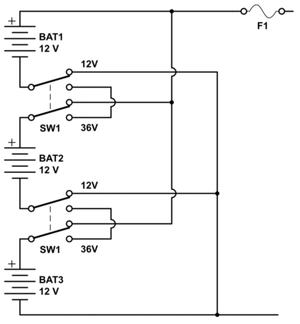A big-screen plasma TV would look pretty sweet hanging on your living room wall, wouldn’t it? But unless you want to start drilling holes and pulling cable, you’re going to have an unsightly additional feature: A black HDMI cable snaking down from the flat-panel to your HD-DVD, Blu-Ray player, or set-top box.
Starting in late 2007, though, you’ll have a more attractive option: A wireless link capable of transmitting a full, uncompressed HD video signal with no discernible loss in image or sound quality.
A startup company called Amimon will be showing prototypes of its Wireless High Definition Interface (WHDI) technology at CES next month, and it expects that this technology will be embedded into consumer products by the end of 2007.
Meanwhile, a host of established CE companies have supported “WirelessHD”. Read more.
Amimon’s technology uses the same 5GHz band and MIMO technology used by the draft 802.11n specification. But whereas 802.11n routers top out at about 300Mbps peak data rates, Amimon is able to push 1.5Gbps of video data — enough to deliver uncompressed 720p or 1080i video signals reliably — across the same 20MHz-wide channel.
Amimon achieves this trick by prioritizing the video data according to its visual significance. “We are able to segment the video data into more important and less important information,” said Noam Geri, vice president of marketing and business development for Amimon.
Once segmented, the most-significant data is delivered with a high degree of fidelity, while less-significant data is discarded when transmission errors occur or bandwidth becomes constrained.
For example, the highest-order bits in each byte of pixel data are quite significant to the appearance of the resulting pixel, so an error discovered in one of these bits will trigger a retransmission. The lowest-order bits make much less difference to the visual image, however, so Amimon’s protocol won’t bother retransmitting data that is found to be faulty among these bits.
The result, in a demo attended by PC Magazine earlier this week in Amimon’s Santa Clara offices, is display fidelity that is indistinguishable from that of a signal carried over a standard HDMI cable. “About 10 percent of the pixels have errors,” Geri said, “but because of the way we average tem out your eye cannot see the difference.”
For the demo, an HDMI cable from an HD-DVD player was plugged into the Amimon transmitter. On the other end of the room, a DVI cable led from the Amimon receiver to an HDTV. For comparison purposes, a long HDMI cable transmitted the same signal to a second, identical TV.
Display quality was unaffected by distances of up to 40 feet, through two walls and two closed doors. Latency was imperceptible, enabling gameplay on an Xbox 360 in a separate room. (Amimon claims latency of less than 1 millisecond in its transmissions.) It was only when the Amimon receiver was virtually blanketed in aluminum foil, blocking it from receiving the signal, that artifacts and image degradation became apparent on the test display.
W-HDI uses the same 5GHz frequency band occupied by 802.11a, 802.11n, and some cordless phones, but Amimon says its channel-hopping capabilities help it avoid interference with existing networks.
By bonding two 20-MHz channels together, Amimon claims its technology will be able to support 3-Gbit/s throughputs — sufficient to drive a 1080p display.
Amimon, which has raised $21 million in two rounds of venture capital funding, will be selling development prototypes to consumer electronics manufacturers at CES, January 7-12, 2007. The company plans to begin production of commercial-grade ASICs in 2007, with consumer products becoming available towards the end of that year, Amimon officials said.
In addition to HDTVs, Amimon’s technology may also be integrated into set-top boxes, HD projectors, or other video accessories, although the company has not yet announced which companies will be using its technology.
Link: Amimon Promises Wireless HD Link In 2007
Link broken? Try the Wayback Machine.

